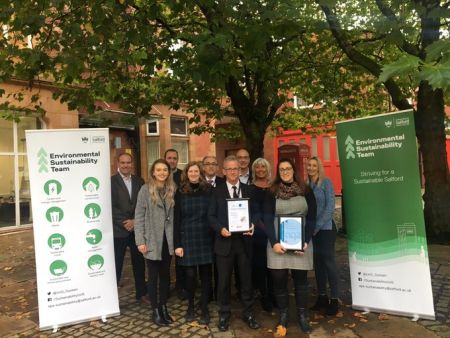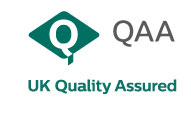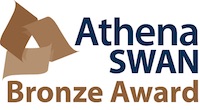Conservative Trade Union Bill would reduce Unions' ability to strike, says Salford research

Conservative Trade Union Bill would reduce Unions' ability to strike, says Salford research
Thursday 6 August 2015
Proposals to introduce tougher regulations on industrial action ballots would make it extremely difficult for many trade unions to mount strikes as a means of challenging employers in national negotiations and government-initiated austerity measures, albeit with significant variations across sectors, unions and ballots, according to new preliminary research carried out at the University of Salford.
- Research applies proposed legislation to 158 strike ballots since 1997
- Essential public service trade union ‘winners and losers’ revealed
- The Fire Service would be unaffected by tightening of trade union legislation
- Industrial action in other so-called ‘important public services’ (Health, Education and Transport) could be reduced by up to 40 per cent
- Most London Underground strikes since 1997, under new proposals, would not have gone ahead
The Conservative Government’s Trade Union Bill, which received its first reading in the House of Commons on 15 July 2015, would make it illegal to hold strike action unless there is at least 50 per cent turnout. In addition, strike action in so-called ‘essential public services’ – including Health, Education of those aged under 17, Fire Services, and Transport - would require 40 per cent or more of eligible union members to back industrial action to be classified as legal. Currently, there is no minimum turnout to validate a ballot and only a simple majority is required.
The proposed legislation has caused outrage among the trade unions but won favour with business leaders such as the CBI. To examine the potential effects of the legislation, Professor Ralph Darlington, Professor of Employment Relations and Director of Postgraduate Research at Salford Business School at the University of Salford, has retrospectively applied the proposed legislation to 162 historical industrial action ballots, 158 of which are strike ballots, involving 28 different trade unions over the period 1997-2015.
Preliminary findings show that while in the past unions have generally been overwhelmingly successful in winning majority ‘yes’ votes in favour of strike action, under the proposed legislation many unions would fail to achieve the Conservative Government’s proposed 50 per cent participation threshold. The research reveals:
- Only 85 of the 158 strike ballots analysed reached the 50 per cent target. The number of workers who failed to reach the target was completely disproportionate to those that did - 444,000 workers could have taken strike action because they had a turnout rate of over 50 per cent, while 3.3 million workers would have been prevented from going on strike.
- Excluding the large-scale 2011 public sector strikes, the research shows that 880,000 workers would, under the proposed legislation, no longer have been able to go on strike.
As a result, some major national strikes would have been deprived of legal protection under the proposed legislation, especially those relating to national bargaining in the public sector.
Even when unions have succeeded in reaching the 50 per cent turnout, some would still fail to obtain the 40 per cent majority threshold of those eligible to vote. Out of 90 strike ballots in the ‘essential public services’ covered by the research, 55 produced turnouts in which more than 40 per cent of the electorate voted ‘yes’, such that the proposed legislation would have reduced the number of strikes in these areas by nearly 40 per cent.
However, the research reveals significant differences by sector:
- Fire Service: Proposed legislation would have had no effect on the Fire Service. All 11 strike ballots cleared the 40 per cent threshold with an average of 54 per cent of balloted workers supporting strike action.
- Health: Only 2 of the 5 national strikes would have cleared the 40 per cent threshold. Of those that failed to meet the 40 per cent, only 20 per cent of eligible voters supported the action. It is the small specialist unions that achieved the highest turnout and high support for strike action.
- Education: More nuanced picture. Only 19 of the 29 strike ballots would have been able to go ahead, but while every ballot conducted in an individual school would have passed the 40 per cent threshold, only two national strikes did so and neither of these involved the main teaching unions.
- Transport: Proposed legislation would have prevented half of transport strikes with only 23 of the 44 strikes clearing the 40 per cent threshold. However, the research reveals a variation. For example, while the BA cabin crew ballots easily cleared the 40 per cent hurdle, a recent Greater London bus workers ballot would not, and while the proposed legislation would have little effect on strike ballots in the railway sector it would have prevented most strikes on London Underground.
On the basis of the evidence available for analysis, while the 50 per cent threshold would dramatically reduce the number of legally protected strikes, the introduction of an additional 40 per cent threshold for ‘essential public services’ would have very little further effect. Nonetheless, overall many unions will find the legislation will make it very difficult for them to mount officially sanctioned strikes as a means of challenging employers in national negotiations and in response to government-initiated austerity measures, especially those relating to national bargaining in the public sector.
Professor Darlington said: “Although the legislation is likely to have a major effect in reducing many unions’ ability to take strike action in a number of sectors, there is a clear local versus national difference, with a tendency for workplace or single-employer ballots to obtain higher turnouts and national ballots to obtain lower turnouts. At the same time, unions with defined occupational identities, such as the Aslef train drivers and FBU firefighters’, also appear to be able to generate relatively higher strike ballot votes than more general unions”.
The preliminary findings in full are contained in a new report published on the Salford Business School website: http://ow.ly/QvHBg
Professor Darlington has written a summary and commentary of the preliminary findings, available via the Salford Business School Blog: http://ow.ly/QvHCI
For further information, please contact: Justin Clark (Senior Press & PR Officer) on: 0161 295 5361 or j.clark@salford.ac.uk









